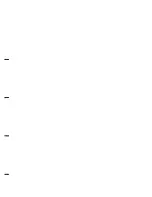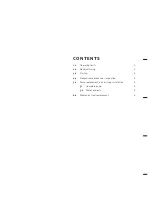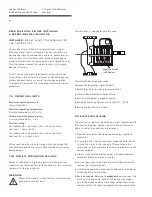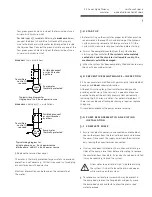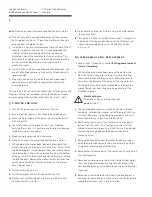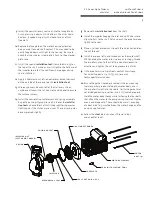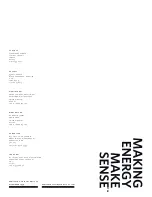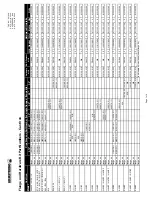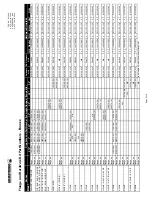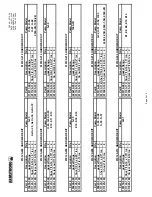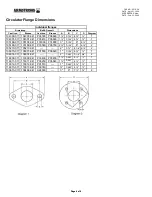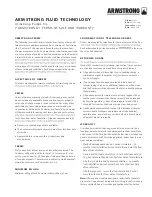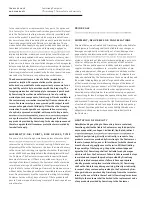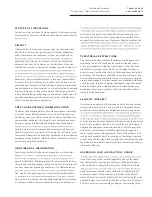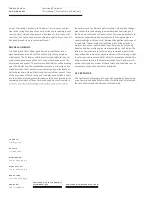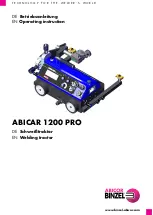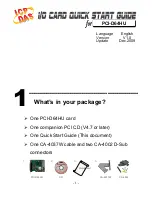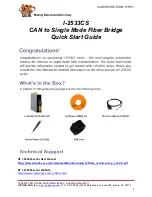
installation &
oper ating instructions
E.2 Series high efficiency
circulator
6
note:
Place a pan under the pump to collect the drain water.
4
If the entire volute is needed to be removed, then remove
the flange bolts and nuts. The entire circulator can then be
removed from the piping system.
5
Install the E.2 Series circulator where there will be sufficient
room for inspection and service. It is recommended that
isolation valves be installed on both the suction and
discharge sides of the circulator for future servicing. This
eliminates the need for draining the system when working
on the circulator (for example, when replacing the
mechanical seal).
6
Install suction and discharge flanges on the pipe ends. The
use of Teflon tape sealer or a high quality thread sealant is
recommended.
7
Pipe strain can be minimized by the use of pipe hangers
near the pump, positioned to support the suction and
discharge piping.
To wire the E.2 Series circulator, follow steps C through G in the
Electrical Wiring section above, noting that electrical supply
and grounding wires must be rated for at least
194°f (90°c)
.
5.2 motor end only
1
Turn off the pump leaving it installed in the line .
2
Ensure electrical power is disconnected and locked out .
3
Close the water supply at the points closest to the pump's
inlet and outlet .
4
For safety, allow water to cool to
100°f (40°c)
before
draining the system. It is best to leave the drain valve open
while working on the system.
5
Bleed the water pressure from the pump.
6
Place a pan under the pump to collect the drain water.
7
While holding the motor body, loosen the four bolts that
attach the motor to the pump casing (volute). Start with the
two bottom bolts first and remove them, then slowly loosen
the top two bolts. Allow the water to drain from the bottom
of the pump. When the water has finished draining, remove
the two top bolts. Remove the motor straight out from the
volute being careful of its attached impeller. The motor is
heavy, do not drop it.
8
Install new casing gasket .
9
Install new motor end (with impeller and seal kit).
10
Tighten four motor end bolts in a crisscross pattern and
tighten evenly to
70
in/lbs.
11
Open isolation flanges or fill the system with water before
starting circulator.
12
To wire the E.2 Series circulator, follow steps C through G in
the Electrical Wiring section above, noting that electrical
supply and grounding wires must be rated for at least
194°f (90°c).
6.0 mechanical seal replacement
1
Follow steps
1
through
4
in section
Existing pump removal
from system piping.
2
While holding the motor body, remove the bottom two
bolts that attach the motor to the pump casing (volute),
then slowly loosen the top two bolts. Allow the water to
drain from the bottom of the pump. When the water has
finished draining, remove the two top bolts. Remove the
motor straight out from the volute being careful of the
attached impeller.
Handle with care
The motor is heavy, and possibly hot,
do not
drop it!
3
While holding the rotor very tightly by hand or a gloved
hand only, unscrew the impeller nut off the motor shaft by
turning it clockwise (i.e. opposite to most bolts and nuts).
Place the motor on its back, with the shaft up.
4
Remove the rotary part of the mechanical seal by gently
pulling it off the shaft. If it is too tight use two small flat
bladed screwdrivers to gently pry it off the shaft by placing
the flat side of the blades onto opposite sides of the
mechanical seal.
5
Remove the face plate from the motor by gently prying it
off of the motor housing extension, and carefully pulling it
straight up, avoiding any shaft contact.
6
Remove the stationary part of the seal by gently prying it off
the steel faceplate.
7
Remove any corrosion present on the stainless steel motor
shaft and face plate (especially the seal seat area) with a
non-metallic brush or scrub pad. Do not use a wire brush or
steel wool.
8
Remove any dust created during step #
7
above and put a
few drops of non-petroleum lubricant around the face plate
where the stationary seat is to be installed.


